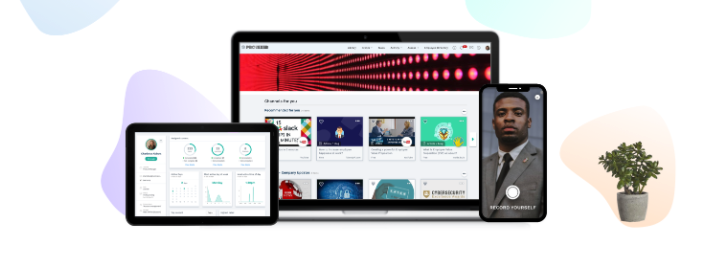Why Your LMS And LXP Should Be In One Place
A great learning experience requires great learning technology. The problem is that existing solutions typically fail either learners or Learning and Development (L&D) teams. The only solution is to choose a unified solution that blends the best of LMSs and LXPs.
LMS Vs. LXP
Traditional LMS platforms are notorious for offering a clunky and frustrating User Experience for learners and administrators alike. As closed systems, they do not enable companies to easily incorporate external resources as they go, or to offer a social and collaborative learning experience. They focus on “checkbox” required training, such as compliance and health and safety. As a result, they are often too structured and management-led to support learners in their unique learning journey.
In today’s fast-paced businesses, where job requirements can change from month to month as technology and markets evolve, LMS platforms are simply not equipped to offer the flexibility and self-directed learning process that employees need. Frankly, legacy LMSs are ruining the employee experience. Employees, especially those of the younger generation, expect better—the kind of consumer-grade User Interfaces that they experience in everyday life.
Learning Experience Platforms (LXPs) have made a significant leap forward in the learning technology space. The best LXPs offer a visually appealing, intuitive User Interface; AI-driven learning recommendations; customized learning pathways; social learning; employee participation; and a focus on knowledge retention over checkboxes and admin.
So far so good. But too much learner focus isn’t always a good thing. When we started to build Learn Amp, we started out as a learner-driven solution—more like an LXP. But what we found is that learners aren’t always that good at driving their own learning! The more directed approach built into LMS solutions can be a helpful way to get learners started. Then, once they’ve built the habit of learning, they can move to a more self-directed learning process.
A Blended Approach To Learning And Development
Given the pros and cons of the two systems, some companies have opted to tag on a separate LXP to their existing LMS. In fact, the market seems to support this trend; LMS providers have begun buying up LXP and learning content platforms to offer greater functionality to their customers (see, for instance, Degreed’s purchase of Pathgather [1] or EdCast’s acquisition of Leapest [2]).
However, as with any software, melding two platforms together will always be fraught with difficulties and bugs. It takes a substantial amount of time and effort to get it right—if it’s even possible. More, your employees will be forced to familiarize themselves with not one, but two different User Experiences because of the different legacy architecture of the two platforms, adding unnecessary time to the onboarding process. Finally, while adding on an LXP to your existing LMS may improve the learner experience somewhat, your L&D team is still left battling the headaches of a legacy LMS.
To create a fully unified employee experience, you need a unified learning platform. Learning can only be a true competitive advantage if it’s built on an alignment between business requirements and employee needs. Where an LMS might help L&D teams manage learning administration, and an LXP might offer learners an engaging learning experience, a People Development Platform should bring together the best of both systems in a single cohesive structure.
Crucially, a People Development Platform also connects other critical elements like employee pulse surveys, check-ins, and performance management.
The advantages of a blended learning solution are obvious.
- You reduce the annual investment in two solutions
- You create a more seamless employee experience
- You boost engagement with learning by offering both directed and self-directed learning
- You allow learners to share great content with one another
- You can track both completion of obligatory compliance training and time spent on voluntary learning and personal development
- Most importantly, you can build a link between learning and performance to support overall business goals.

Future-Proofing Your Business
Now more than ever, businesses need to recruit, retain, and engage top talent. The very survival of our companies depends on our ability to find and keep the people who can help us recover from the gruelling outfall of the COVID-19 pandemic. Our employees need to adjust to new realities fast, learn new skills at pace, and handle the complexities of working from home for the long term.
As a result, delivering a quality digital learning experience to our employees from Day 1 has never been more important. In particular, building a close alignment between employees' needs (to upskill and develop their careers) and those of the business (to ensure compliance, retain knowledge, and improve performance) is critical to long-term success.
So, as a decision-maker, you have a choice. Do you try to bolt on an LXP to your existing LMS and hang onto a platform that frustrates your users and detracts from a good employee experience? Do you opt for one of the leading LMSs and hope their purchased LXP works OK? Or do you switch to a People Development Platform, built from the ground up to truly align the needs of the employer and employee?
Why back the past when you could—and should—invest in the future?
References:
[1] The Learning Experience Market Explodes: Degreed Acquires Pathgather, Taking an Early Lead
[2] EdCast Acquires Leapest. Changing The LXP Game with Content, Marketplace, and LMS Features


.jpg)

